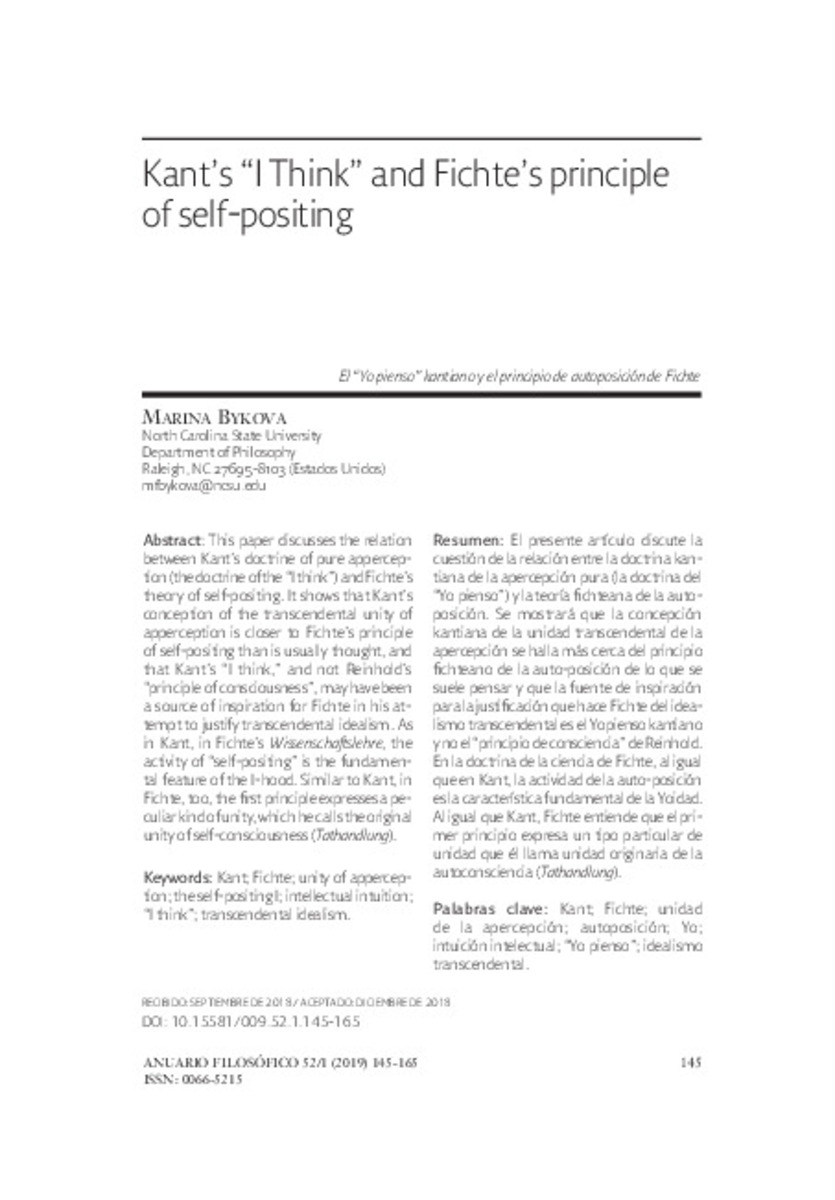Full metadata record
| DC Field | Value | Language |
|---|---|---|
| dc.creator | Bykova, M. (Marina) | - |
| dc.date.accessioned | 2019-04-02 | - |
| dc.date.accessioned | 2021-08-23T10:23:46Z | - |
| dc.date.available | 2021-08-23T10:23:46Z | - |
| dc.date.issued | 2019 | - |
| dc.identifier.citation | Bykova, M. (Marina). "Kant’s “I Think” and Fichte’s principle of self-positing". Anuario Filosófico. 52 (1), 2019, 145 - 165 | es |
| dc.identifier.issn | 0066-5215 | - |
| dc.identifier.uri | https://hdl.handle.net/10171/61488 | - |
| dc.description.abstract | This paper discusses the relation between Kant’s doctrine of pure apperception (the doctrine of the “I think”) and Fichte’s theory of self-positing. It shows that Kant’s conception of the transcendental unity of apperception is closer to Fichte’s principle of self-positing than is usually thought, and that Kant’s “I think,” and not Reinhold’s “principle of consciousness”, may have been a source of inspiration for Fichte in his attempt to justify transcendental idealism. As in Kant, in Fichte’s <i>Wissenschaftslehre</i>, the activity of “self-positing” is the fundamental feature of the I-hood. Similar to Kant, in Fichte, too, the fi rst principle expresses a peculiar kind of unity, which he calls the original unity of self-consciousness (<i>Tathandlung</i>). | en_US |
| dc.language.iso | eng | - |
| dc.publisher | Servicio de Publicaciones de la Universidad de Navarra | es_ES |
| dc.rights | info:eu-repo/semantics/openAccess | es_ES |
| dc.title | Kant’s “I Think” and Fichte’s principle of self-positing | en_US |
| dc.type | info:eu-repo/semantics/article | es_ES |
| dc.identifier.doi | 10.15581/009.52.1.145-165 | - |
| dadun.citation.endingPage | 165 | - |
| dadun.citation.number | 1 | - |
| dadun.citation.publicationName | Anuario Filosófico | - |
| dadun.citation.startingPage | 145 | - |
| dadun.citation.volume | 52 | - |
Files in This Item:
Statistics and impact
Items in Dadun are protected by copyright, with all rights reserved, unless otherwise indicated.






